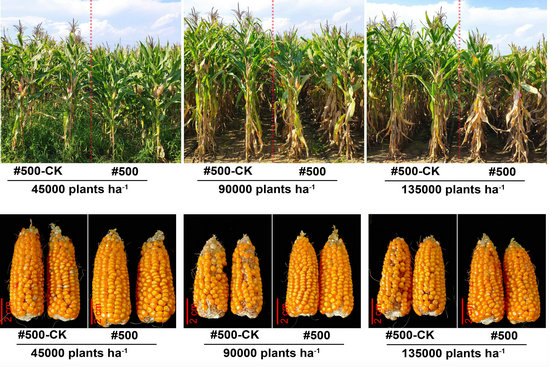Recently, a collaborative research of Maize Functional Genomics Innovation Team of Biotechnology Research Institute, CAAS and South China Agricultural University uncovered that theminic "Green Revolution" geneZmSPL12 confers enhanced lodging resistance through transcriptional regulation of D1 in maize, which provides a new insight and supplies excellent gene sources for improvement of high-density tolerant maize. The study was published in Plant Biotechnology Journalwith the title of "overexpression of ZmSPL12 conferers enhanced lodging resistance through transcriptional regulation of D1 in maize".
Plant height is an important agronomic trait in maize. Breeding of maize cultivars of reduced plant height and ear height, and hence increased lodging resistance is a continuous goal. In this work, we identified a maize transcription factor, ZmSPL12, that functions as a direct upstream regulator of D1, which encodes a GA 3-oxidase catalyzing the final step of bioactive GA synthesis. We demonstrate that ZmSPL12 directly binds to the promoter of D1 and repress its expression, resulting in decreased endogenous GA levels, and thus decreased cell length in the internodes. Further, we introgressed the ZmSPL12-OE #500 transgene into two elite parental inbred linesthrough repeated backcrossing. The plant height and ear height reduced, and lodging resistance enhanced significantly. Together, These results demonstrate that ZmSPL12 could mimic the function of “Green Revolution” genes to confer reduced plant height and increased lodging resistance, thus facilitating high-density planting and increased yield in maize.
Zhao Binbin, a PhD student and Xu Miaoyun, a professor of Biotechnology Research Institute, are the co-first authors. Wang Haiyang, a professor of South China Agricultural University, and Wang Baobao, a professor of Biotechnology Research Institute, are the co-corresponding authors. This research was supported in part by projectsof the National Key Research and Development Program of China (2021YFF1000161, 2020YFE0202300) , a grant from the National Natural Science Foundation of China (32022065),and Hainan Yazhou Bay Seed Lab (B21HJ2001).

|